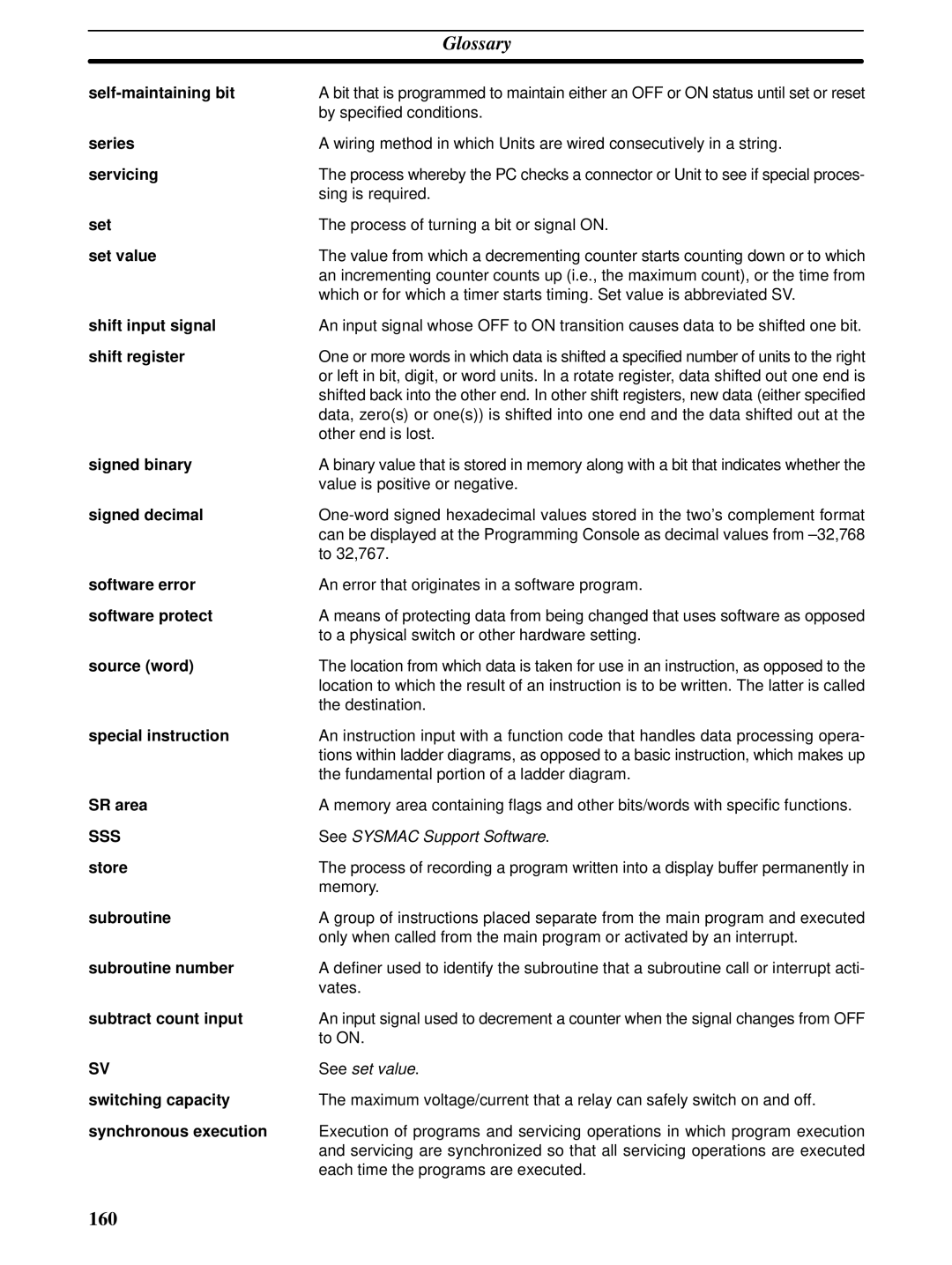| Glossary | |
|
|
|
| A bit that is programmed to maintain either an OFF or ON status until set or reset | |
| by specified conditions. | |
series | A wiring method in which Units are wired consecutively in a string. | |
servicing | The process whereby the PC checks a connector or Unit to see if special proces- | |
| sing is required. | |
set | The process of turning a bit or signal ON. | |
set value | The value from which a decrementing counter starts counting down or to which | |
| an incrementing counter counts up (i.e., the maximum count), or the time from | |
| which or for which a timer starts timing. Set value is abbreviated SV. | |
shift input signal | An input signal whose OFF to ON transition causes data to be shifted one bit. | |
shift register | One or more words in which data is shifted a specified number of units to the right | |
| or left in bit, digit, or word units. In a rotate register, data shifted out one end is | |
| shifted back into the other end. In other shift registers, new data (either specified | |
| data, zero(s) or one(s)) is shifted into one end and the data shifted out at the | |
| other end is lost. | |
signed binary | A binary value that is stored in memory along with a bit that indicates whether the | |
| value is positive or negative. | |
signed decimal | ||
| can be displayed at the Programming Console as decimal values from | |
| to 32,767. | |
software error | An error that originates in a software program. | |
software protect | A means of protecting data from being changed that uses software as opposed | |
| to a physical switch or other hardware setting. | |
source (word) | The location from which data is taken for use in an instruction, as opposed to the | |
| location to which the result of an instruction is to be written. The latter is called | |
| the destination. | |
special instruction | An instruction input with a function code that handles data processing opera- | |
| tions within ladder diagrams, as opposed to a basic instruction, which makes up | |
| the fundamental portion of a ladder diagram. | |
SR area | A memory area containing flags and other bits/words with specific functions. | |
SSS | See SYSMAC Support Software. | |
store | The process of recording a program written into a display buffer permanently in | |
| memory. | |
subroutine | A group of instructions placed separate from the main program and executed | |
| only when called from the main program or activated by an interrupt. | |
subroutine number | A definer used to identify the subroutine that a subroutine call or interrupt acti- | |
| vates. | |
subtract count input | An input signal used to decrement a counter when the signal changes from OFF | |
| to ON. | |
SV | See set value. | |
switching capacity | The maximum voltage/current that a relay can safely switch on and off. | |
synchronous execution | Execution of programs and servicing operations in which program execution | |
| and servicing are synchronized so that all servicing operations are executed | |
| each time the programs are executed. | |
160
